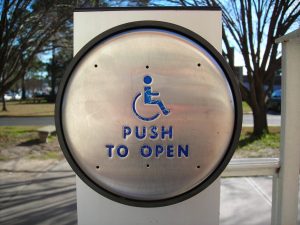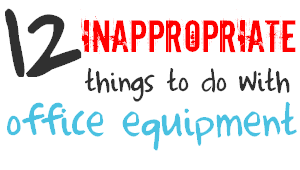 Starting up a small business is difficult. With challenges like securing small business financing, creating a workable business model for your novel idea, and carrying out your project in real life, entrepreneurs are usually the last people who need additional difficulties stacked on. Ultimately, though, every new business must comply with certain regulations and guidelines from federal and local governments.
Starting up a small business is difficult. With challenges like securing small business financing, creating a workable business model for your novel idea, and carrying out your project in real life, entrepreneurs are usually the last people who need additional difficulties stacked on. Ultimately, though, every new business must comply with certain regulations and guidelines from federal and local governments.
One of the more well-known laws to come out of the United States government has been the Americans with Disabilities Act (ADA). Although reaching ADA compliance may sometimes seem like a pain for small business owners and entrepreneurs, the act serves an important purpose in safeguarding a vulnerable population. However, in spite of the good that it does, there are those who will abuse the ADA, trolling for minor violations to get rich at the expense of small businesses. Avoid falling victim to this kind of behavior at your own small business and check your compliance on these issues.
Wheelchair Accessibility
One of the most glaring errors that some small businesses will commit has to do with wheelchair accessibility. Whether you have potential clients who might be in wheelchairs or you may employ wheelchair-bound workers at any point, your workspace must be accessible by any person in a wheelchair.
This means providing ways around obstacles, like stairs or curbs, with wheelchair-friendly ramps. Keep in mind that it’s much harder to wheel up an incline than it is to walk, so ramps should be no steeper than five degrees — that’s one vertical foot for every 12 horizontal feet. It’s also important to give wheelchairs sufficient room to move through a building. This means making sure that your doorways are a minimum of 32” wide, but it’s also important to avoid clutter in your workspace. Desks that are too close together or tables that impede wheelchair access may get you into trouble with the ADA.
Triple Check Handrail Compliance
Stair and ramp rails are a good idea for any building with multiple levels — even able-bodied customers can trip up on the stairs, so solid rails are a must to protect your business from costly lawsuits. While it stands to reason that there is a minimum height requirement for railing according to the ADA, many people don’t realize that there is also a maximum height. In order to be ADA compliant,handrails must be between 34” and 38” high. If children are the primary users of the facility, a second rail must be added at 28” high. More or less height, even by small amounts, can lead to harmful litigation if a lawsuit troll finds out.
Handrail compliance can be one of the more touchy subjects with small business owners who want to create the most open space possible, either to help customers feel at ease or to promote an open workspace atmosphere for employees. For small businesses that rely on a certain level of aesthetic elegance, less cluttering cable handrails are recommended.
Handicap Parking
Not every business has control over their parking situation. However, those that do must take on the additional responsibility with as much attention to detail as they put into their main place of work. Handicap parking spaces may seem to go unoccupied for much of the time, but it will end up costing you a great deal if you neglect to designate some space for handicapped individuals. Government regulations require that you have one handicap accessible parking space for every 25 ordinary spaces in your lot. This requirement changes to one in 50 after the first 100 spaces, but these changes are not likely to affect small businesses.
If you have a curb or stairs from the parking lot to your building, make sure that your wheelchair ramps are placed near your handicap parking spaces.
The ADA has helped many Americans to enjoy a quality of life that they would not have otherwise had. Small businesses can help disabled Americans live out normal lives and avoid the ire of ADA lawsuit trolls by checking compliance closely and making adjustments when needed.
Brooke Faulkner is a mother of two from Portland, Oregon. She enjoys writing about marketing and SEO, as well as supporting small businesses in her local community.




Excellent advice. Indeed, no matter what size of business you own, you need to be ADA compliant
Making businesses disabled friendly has been a thurst are for the ADA regulations and now the recent updates also push to make websites also disabled friendly and there is a hefty fine for the businesses who fail to adhere to these regulations.
Donna Branton recently posted..Hello world!
Making your work place compliant to ADA regulations not only saves money to pay on hefty penalties but also enhances the reputation of the business as the one that treats every one equally and is sensitive to every body’s specific needs.